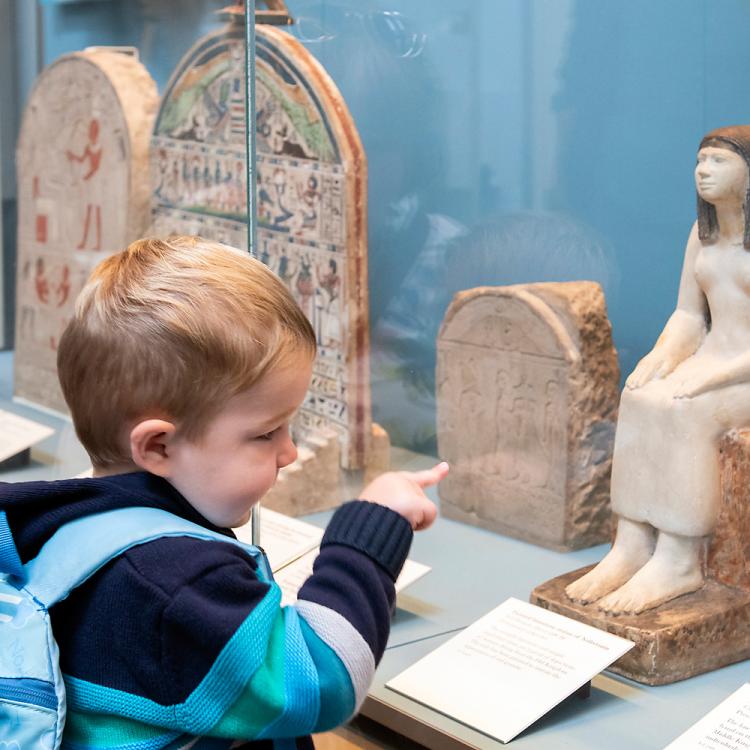Visiting the gallery
Opening times
Daily: 10.00–17.00 (Fridays: 20.30)
See full opening hours
Advance booking advised
Gallery audio guides
Listen on the Audio app, available on the App Store and Google Play.
This gallery explores death and the afterlife, something which held particular significance and meaning for the ancient Egyptians.
Mummification, magic and ritual are investigated through the objects on display here. These include mummies, coffins, funerary masks, portraits and other items designed to be buried with the deceased.
Take a virtual tour
People and animals were both subject to mummification. Take a closer look in Rooms 62 and 63, using Google Street View.
Gallery facts
- The significance of death and the afterlife to ancient Egyptians meant complex funeral preparations and rites, thought to be needed to ensure the transition of the individual from earthly existence to immortality.
- To ensure a successful afterlife for the dead through mummification, most internal organs were removed and preserved in distinctive jars. The brain was also removed, but not preserved, and the rest of the body was dried with natural salt, treated with oils and resins, and tightly wrapped in bandages.
- Small figures called shabtis were buried to magically provide for the deceased and help them pass into the afterlife.
- Animals sacred to the gods, like bulls, crocodiles, cats and falcons, were also mummified.
- The study of human remains in the Museum's collection helps advance important research in fields such as archaeology, social anthropology, human biology, the history of disease and genetics.
- Today, researchers at the Museum use medical CT scanners to explore the mummies in the Collection. These new techniques have allowed researchers to discover much more about life and death along the Nile.
Accessibility
- Some objects in this collection feature on the British Sign Language multimedia guide. This resource is temporarily unavailable. You can access a selection of BSL films on your own device.
- Some objects in this collection feature on the audio description guide, available on Soundcloud.
- Step-free access.
- View sensory map.
Visit Accessibility at the Museum for more information.










